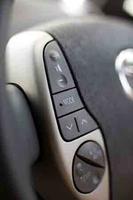In technical terms, the particular versatility of PVC allows for precise adjustments to its material properties to give the exact performance and quality requirements for specific end-use applications.
PVC's main automotive applications are:
- Underbody coatings, sealants and floor modules.

- Wire harnesses (e.g. cable insulation and grommets).
- Passenger compartment parts (e.g. dashboard and door panels seating and arm rests).
- Exterior parts (e.g. body side protection strips, weather strips and window sealing profiles).
The benefits of PVC are that it:
Makes vehicles last longer. The average service life of a modern road vehicle is now 17 years in contrast to 11½ years in the 1970s. PVC has made a special contribution to this as the principal protector of the underbody (in the form of a wear-resistant coating), as sealants against humidity and in other protective profiles. The durability of PVC has also made it a first choice for the cladding of interior parts such as dashboards and door panels. Longer lasting vehicles also mean a saving of natural resources.
Conserves fossil fuels. PVC itself is a material with a comparatively low energy consumption in its manufacture, thereby cutting down depletion of natural resources compared to alternative materials that might be used. When used in vehicles this natural low carbon footprint advantage is enhanced further by the lightness of PVC components in comparison to traditional materials. Reduced vehicle weight = reduced fuel consumption.
Helps save lives. PVC is important in shock-absorbing vehicle components such as 'soft' dashboards, reducing injury in the case of impact. Fabrics coated with PVC are often used in life-saving vehicle air bags, whilst the fire retardant properties of the material contribute to the overall safety of a vehicle.
Increases design freedom.The freedom given by PVC in vehicle interiors allows for even the most challenging designs to enhance the comfort of vehicle interiors. PVC can be made to give many attractive qualities of appearance and leather-like softness.
PVC is important in shock-absorbing vehicle components such as 'soft' dashboards, reducing injury in the case of impact
Reduces noise for vehicle occupants. The sound-dampening properties of PVC in carpet backings, coatings and linings cuts down noise for the driver and passengers, increasing comfort and reducing stress.
Makes vehicles more affordable. PVC compounds used in vehicles offer excellent cost-performance advantages. As a result, they bring higher quality vehicles into the price range of a greater number of people.
PVC is recyclable. Components produced with PVC have the potential to be recycled in other products at the end of their first use in the vehicle.









